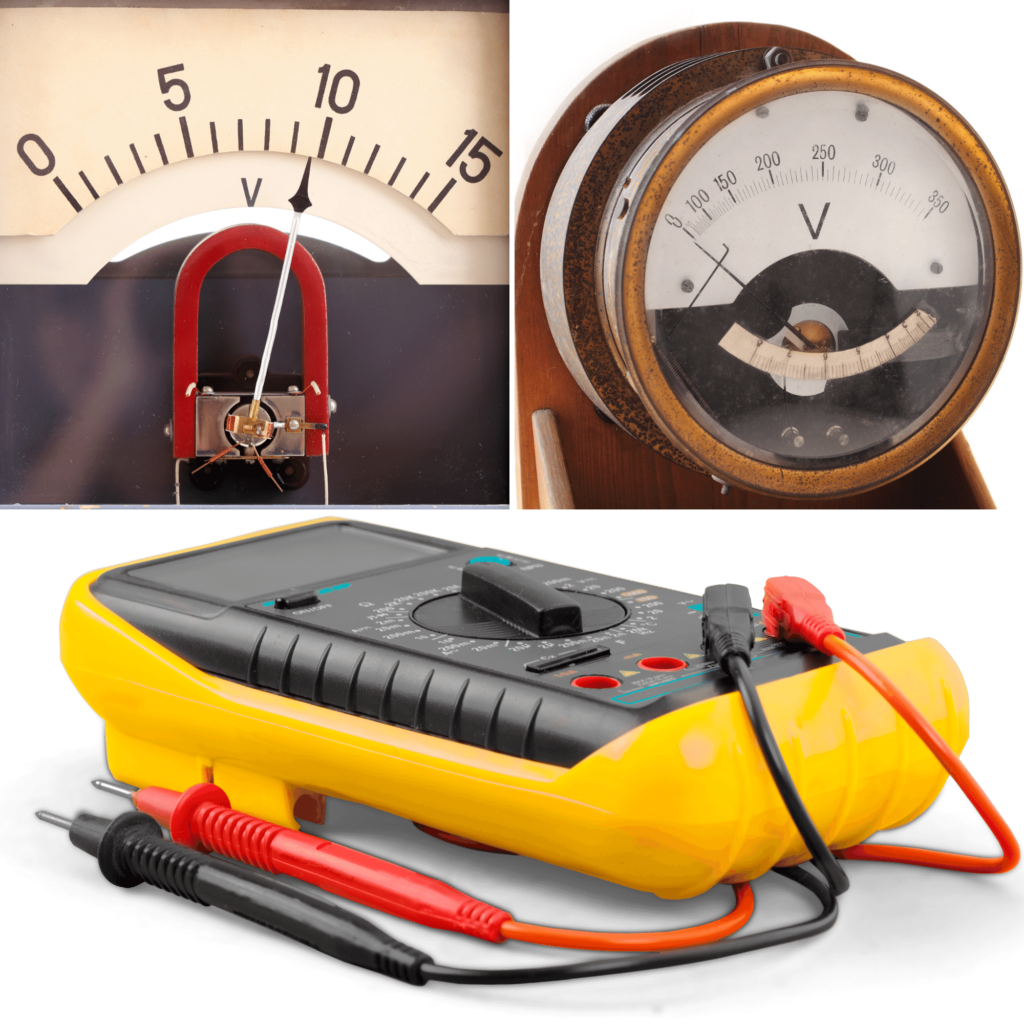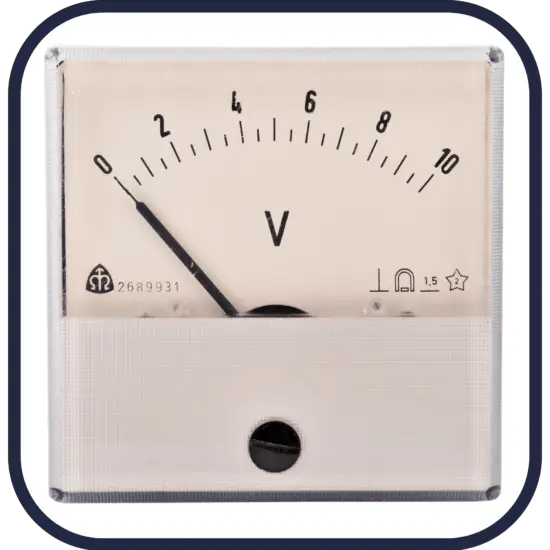30-second summary
Voltmeter
Many voltmeters are digital, with numerical displays for readings. however, digital voltmeters are generally more accurate than analog instruments. An analog panel meter is shown in the figure. The different scales on the dial correspond with separate input terminals at the rear of the unit. Modern analog voltmeters are still manufactured and may be cheaper than their digital equivalents.
The most common types of voltmeters are:


Voltmeters are instruments used for measuring the electric potential difference between two points in an electric circuit. To find the potential difference between any two points in the circuit, the voltmeter terminals are connected between those points without breaking or cutting the wire. Voltmeters are connected in parallel. They are made in a wide range of styles, some separately powered (e.g. by the battery), and others powered by the measured voltage source itself. Their functionality is usually built into modern multimeters.
An ideal voltmeter would have infinite resistance, so connecting it between two points in a circuit would not alter any of the currents. Real voltmeters always have finite resistance, but a voltmeter should have large enough resistance that connecting it to a circuit does not change the other currents appreciably. Voltmeters that can measure a potential difference of 1 μV are common, and sensitivities down to 10-12 can be attained. Digital meters can be made with high accuracy, typically better than 1%. Specially calibrated test instruments have higher accuracies.
Analog and Digital Voltmeter
Many voltmeters are digital, with numerical displays for readings. The voltmeter instruments also offer analog readings by moving a pointer on a scale to indicate voltage; however, digital voltmeters are generally more accurate than analog instruments. An analog panel meter is shown in the figure. The different scales on the dial correspond with separate input terminals at the rear of the unit. Modern analog voltmeters are still manufactured and may be cheaper than their digital equivalents. Digital voltmeters give a numerical display of voltage by use of an analog-to-digital converter. However, a digital volt meter allows a wider range of values to be viewed more easily.
Types of Voltmeters
The different types of voltmeters are determined by the construction principle and measurement types, which are:

